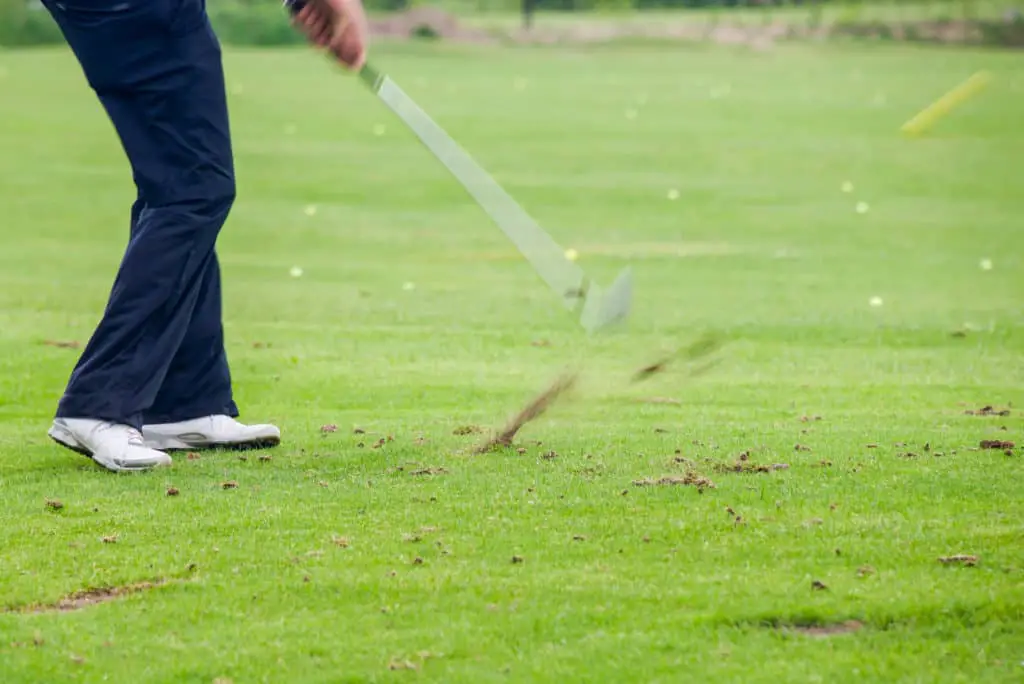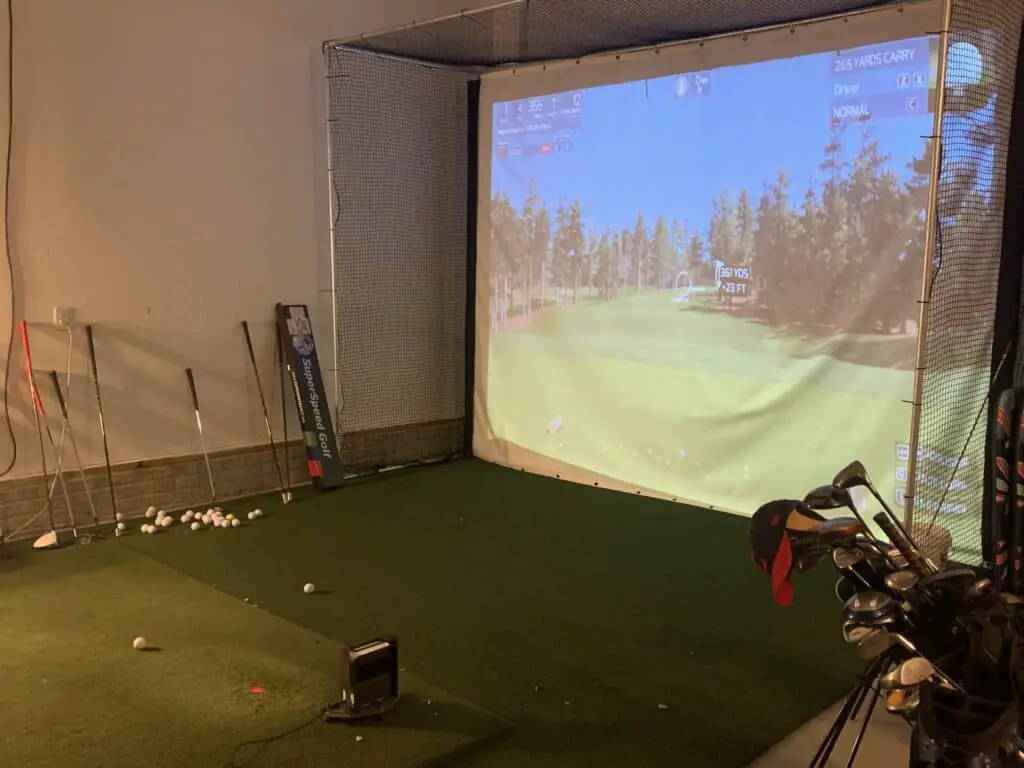I always find the game of golf interesting.
Those that hit a fade, often want to hit a draw.
Those that hit a draw, sometimes want to fade.
Most people see the ability to draw the golf ball with all clubs, the sign of a high end player. Learning to hit a draw shot in golf seems overwhelming for many, and this is especially true when it comes to the driver.
As a junior golfer, I often hit a fade. However, in the past 15-20 years I have hit 90% of my shots as a draw shot. It is what my eyes sees on the golf course and I am able to control the ball flight high and low, while having enough power to play the course.
The draw shot is a quality go to shot as a stock shot that you can rely on over the course of an 18 hole round of golf, a 4 day tournament or a full season of golf.
Having that draw stock shot, the one that starts slightly right and curves back towards the target for the right handed golf is an impressive shot and one that many have relied on over the years.
Let’s dive right into the main topic!

How To Hit A Draw With Your Driver (5 Keys)
- Consider the Ball Flight Laws
- Create a slightly Closed Setup
- Create a slightly Opened Clubface at Address
- Keep your Path to the Inside
- Practice the Stock Shot Drill (details below)
Key #1: Consider the Ball Flight Laws
For years, there was great confusion over what actually caused the ball to start to the right and curve back towards the target. Many thought that the path controlled the start line and the club face controlled the curve. When in reality, the opposite is actually true.
For the most part, the ball will start in the direction of the clubface at impact. So if the club is 3 degrees open or the right, the ball still starts right. The ball will then curve dependent on the relationship of the club face to the swing path.
To hit a draw with any club (one that starts right and curves back towards the target), the golfer will want a club face that is slightly open at impact to get the ball to start right. However, the club face will be closed to the swing path, which means the swing path is further right than the club face.
In simple terms:
- The ball will start in the direction of the club face at impact
- The ball will then curve away from the swing path
Example 1:
- Club Face – 2 degrees open (or to the right)
- Swing Path – 4 degree to the right
- The ball will start right and curve left, or back towards the target line.
Example 2:
- Club Face – 3 degrees open (or to the right)
- Swing Path – 1 degree to the right
- The ball will start right and fade away fron the target. This would be a push fade.
These two examples show the general pattern and what is needed to hit a draw shot with your driver. Essentially, on average you want a club face that is 1-2 degrees open at impact with a path that is slightly further open or the right.
Resource: Ball Flight Laws (Complete Overview)
Busting the Myths of the Past
When I was a junior golfer reading the major golf publications in the 1990’s, one would understand that you really needed to get your hands through the shot by rolling your top hand over to get your toe of your club to go from pointing to the sky on the backswing to pointing towards the sky again on the follow through.
This is not true. You can hit a consistent draw with an open club face, as along as the path is to the right of the club face.
This takes away the pressure of trying to “close” the club face and helps maintain the stability of the club face through the hitting zone, resulting in a higher rate of consistency!
The release of your golf swing can always be similar and you can adjust your ability to hit a draw or fade through setup and controlling your swing path. Developing one release is easier to maintain the consistency that many golfers lack and are on a journey to find!
Now that we have a greater understanding of what needs to take place at impact to hit a draw with the driver, we can look at some minor tweaks to help you reach this ideal impact position to create a stock shot that is a draw with the driver. You can increase your distance and roll out by striking the ball solid with a slight draw spin on it!
Key #2: Create A Slightly Closed Stance
By closing the stance, you will be able to create a swing path that is more to the right. This will allow your club face to be closed to the swing path, but open to the target line to create the ideal draw shot with the driver.
You can accomplish this by slightly dropping your back leg away from the target line by several inches. This pushes your rear hip back and allows for a more inside to out swing where the club is travelling on an arch, but doesn’t start turning left until after impact. This will help keep your path at the 3-4 degrees to the right path that is needed to hit a push draw.
As you begin your swing, you can focus on keeping that path to the inside and swinging to the right of where 2nd base would be. The great news is that you don’t have to worry about “closing” the club face through impact.
The best online instructor from a setup perspective to hit a draw is Shawn Clement. He has an entire series on youtube about pre setting positions and aligning club face to help produce a draw. Overall, he is a high end instructor who spends a great deal of time helping golfers finding a gravity based swing built around making an athletic, natural motion in the golf swing.
Resource: Full Review on Shawn Clement
Key #3: Create A Slightly Open Club Face at Address
The club face can be slightly opened at address. As long as your swing path is further to the right than the club face you will be able to hit a push draw. You can try different setups with the club face until you find the right combination in the ball flight laws to hit the push draw. Understand the basics and that if the ball starts to the left, you club face may need to be more opened at address and the opposite holds true if the ball starts too far to the right.
Once again, having an open clubface might seem counterintuitive to what you have learned in the past because so much of the teaching at one point talked about a closing the face. The club face only has to be closed to the path, but you don’t have to make a concentrated effort on closing the face through impact.
Sometimes the best draws are created when the face is held off from closing. This helps prevent the golfer from coming over the top and stay patient with allowing the club face to stay on an inside to out path. The ball flight laws alone and the understanding of what causes the draw can cause a dramatic shift for those that didn’t understand what actually causes a draw.
The driver takes extra patience because of its length to allow the club to stay inside. Understanding that the club face can be slightly opened to the target line as long as it is closed to the path can be a game changer for many golfers.
Stay patient from the top and let the club stay on a path out to the right!
Resource: George Gankas Review
Key #4: Keep Your Path To the Inside
With a closed stance you are on your way to producing a swing path that stays to the inside. Allowing the club to be shallow and stay on a more inside path is the best recipe for a push draw. When the golfer gets steep from the top there is a battle to keep the club on an inside to out path.
From the top, the golfer can be patient with their arms and allow the body to turn. This will help keep the hands and arms on the inside path needed to hit a push draw. The feeling that many high handicappers face that makes it difficult to hit a draw with the driver is the feeling of rushing from the tops and trying to hit it over 300 yards. Instead, have a slight squat, start to turn and then let the arms come through. This will help the overall sequences and allow the arms to stay on an inside and shallow path to and through the ball.
Resource: Over the top golf swing: how to stop today!

Key #5: Practice the Stock Shot Drill
Having a stock shot in golf is one of the most improtant fundamentals. When you can control your start line, it is a game changer and one where you can start playing golf vs playing golf swing while out on the course.
The stock shot built off of a draw is built on staring the ball right of the target line and allowing the ball to curve back towards the target. The Stack and Tilt Instructors helped revolutionize the golf industry by promoting a weight forward, inside out swing where the golfer can’t help but to hit a draw.
Resource: Stack and Tilt: 10 Things to Consider
They identified three fundamentals in the golf game as the following:
- The golfer is able to control the low point of the swing.
- The golfer is able to control the start line and curve of the ball
- The golfer has enough distance to play the course
This stock shot drill below will help you improve the 2nd fundamental in the golf swing, and when you can do this with the driver, you can step up to any tee shot with confidence and hit your shot konwing that you are going to start your ball in a general direction and curve it in a general direction.
Stock Shot Drill:
- At the driving range, setup an alignment stick down the target line about 10-12 feet in front of you.
- Set up a second alignment stick 4-5 feet right of the first alignment stick.
- This is the gap you will try to start your ball in.
- Assess how many times out of 10 you can do this successfully.
- As you advance, start to try to control the curve of the ball and experiment with your setup, both stance and club face direction, prior to starting your swing.
Resource: Complete Overview on Developing A Stock Shot!
Add On: Launch Monitor
One great addition to take this drill to the next level is an affordable golf launch monitor. While many can’t afford a Trackman, there are some great options on the market. I would highly recommend the SkyTrak Launch Monitor. This launch monitor has been a great help to my game as I have been able to build a stock shot. The shot tracer feature whether hitting at the driving range or on software that allows you to play a course can give you the visual needed to develop the stock shot.
Resource: SkyTrak Launch Monitor: The Ultimate Game Improvement Tool!
Here are the top 3 options to check out:
Some key data that is provided can help you improve your swing and ultimately get to where your stock shot with a driver is draw:
- Spin Axis
- Carry Distance
- Swing Path
- Ball Speed
- Launch Angle
If you visit any PGA Tour even you will see plenty of golfers utilizing their launch monitors. Why most can’t afford a Trackman, there are some very affordable options in the 500-2000 dollar range. I own the SkyTrak and think the world of it.

BONUS: One More Drill!
If you still can’t hit a draw with any of the keys above, I have one more extreme measure you can take. I learned this swing from Jim Venetos and I think it is impossible to not hit a draw. Whether you take and fully commit to his system or use this swing as a drill, you should be able to hit a draw. Here are the steps you need to take.
- Setup to the golf ball.
- Take and close your shoulders around 45 degrees closed.
- Re Grip the club, but keep the club either square or slightly open.
- Keeping your body still, swing along your shoulder line and keep your shoulders closed through the swing.
- This should produce a path that is well right with a club face that is only slightly right.
Resource: Jim Venetos Review
I would recommend starting with a short iron and progressing up to the driver. If you combine this approach with the stock shot drill, you can start to feel what a draw shot actually looks and feels like.
Many golfers struggle to get the feeling for what a draw shot is, especially with the driver, but once you can see the flight and have the feel, the draw shot can become yours!
Final Thoughts: How To Hit A Draw With Your Driver (5 Keys)
The key is to implement these understandings and drills and get to work. I highly recommend the launch monitors as something to help speed up the process and to provide the feedback necessary to know what is taking place.
Practiing withe visuals of the ball flight in addition to real time data is a game changer and one that amateurs can now take advantage of! Stop guessing as your practice at the driving range and use the dta and shot visualizination fromt he shot tracer to see what actually took place. THe SkyTrak driving range feature will keep your last 10, 20, 30 or whatever amount you want on the screen to see your shot dispersion and your shot patterns.
Early on I would spend a lot of time trying to hit 20 shots in a row that all started right and curved towards the target without a significant over curve! It was a great way to develop a stock shot and now I know I can rely on the push draw and be successful hitting it a higher percentage of the time!
Resource: Alternative Golf Swings (5 Quality Options)
Take Action – What You Can Do Today to Get Better
What does this mean for you? I believe in the following recipe to get better:
1 – Improve your motion in the golf swing by identifying a golf instructor. Here are some options:
Here is a list of golf instructors that we have reviewed:
2 – Train to swing faster and improve your swing speed. Here are some options:
Looking to gain more Speed and Distance in your swing. Two Options:
3 – Understand course strategy and work to break through your next barrier. Here is a series on breaking through:
We have provided guides on how to break 100, 90, 80 and 70. Check out more below, if interested.
4 – Practice Frequently
Did you know that I build a golf simulator in my garage and have played over 500 rounds of golf on my SkyTrak system? It has been a game changer and one worth checking out. Here are some of my other posts on golf simulators frequently asked questions:
- Is a Golf Simulator Worth It?
- How to Build a Golf Simulator?
- What is the Best Golf Simulator?
- Golf Simulator Accessories?
- How to Build a Golf Simulator for under $7000
- Top 11 Reasons to Buy a SkyTrak
- How to Build a Golf Simulator for Under $1000
- Why Build A Golf Simulator?
- What Space is Needed?
- Can A Golf Simulator Improve My Game?
- How Much Does A Golf Simulator Cost?
- Don’t Forget to Check out our 15 best golf swings of all time.
